In today’s globalised world, fluency in spanish in the workplace is vital. Knowing grammar and vocabulary may not be enough. Using native spanish expressions for work can make all the difference to your professional success.
Why are Spanish Expressions for Work Important?
Spanish is recognized as an important language in the business world. Therefore, a good knowledge of this language is indispensable in the professional world. Beyond the fundamental linguistic competence, knowledge of “Spanish expressions for work” can be a powerful tool to improve communication and relationships in the workplace.
Native spanish expressions for work
Here are ten essential native Spanish expressions for the workplace that will help you perform in the professional environment with greater fluency and self-confidence.
Expression 1: “La pelota está en tu tejado”
This expression is used to indicate that it is someone else’s turn to take an action or make a decision.
Example: “Hice todo lo que pude en el proyecto. Ahora la pelota está en tu tejado.”
Expression 2: “Echar a rodar”
“Echar a rodar” means starting a process or project.
Example: “Echemos a rodar la propuesta para poder presentarla la semana que viene.”

Expression 3: “Tras bambalinas”
This phrase is used to refer to actions that occur in private or out of public view.
Example: “Nuestro equipo trabajó tras bambalinas para asegurar el contrato.”
Expresión 4: “Como Dios manda”
“Como Dios manda” means to do something exactly as the rules or the law say it should be done.
Example: “Nuestra empresa ha hecho todo como Dios manda para garantizar transparencia.”

Expression 5: “Escalar puestos”
It means advancing in the corporate hierarchy or moving up the career ladder.
Example: “Comenzó como interna, pero trabajó duro y escaló puestos hasta convertirse en CEO.”
Expression 6: “Arrancar con fuerza”
This phrase means to start a project or work quickly and with a lot of enthusiasm.
Example: “El nuevo director de ventas arrancó con fuerza tan pronto como fue contratado.”

Expression 7: “En la misma sintonía”
“Estar en la misma sintonía” means to have the same understanding or to agree with someone else.
Example: “Vamos a reunirnos mañana para asegurarnos que estamos en la misma sintonía.”
Expression 8: “Elevar el listón”
“Elevar el listón” means to establish a higher level or a new standard.
Example: “Con nuestro innovador diseño, elevaremos el listón en la industria.”

Expression 9: “Ponerse en contacto”
“Ponerse en contacto” means to communicate briefly with someone to discuss or confirm something.
Example: “Nos pondremos en contacto la semana que viene para comentar el informe.”
Expression 10: “Hacer cada uno su parte”
It means contributing fairly and equitably to teamwork, carrying out assigned responsibilities and meeting expectations.
Example: “En este proyecto es importante que cada uno haga su parte y complete su tarea a tiempo.”

How to incorporate these expressions for work
Knowing how to use native Spanish is an essential part of learning Spanish, especially in the workplace. Here are some strategies for incorporating these expressions into your professional discourse in a fluent, effective and natural way.
Listen and Learn
Listen to native Spanish speakers, whether in a meeting, in a business podcast or even in a TV show or movie.
You should pay attention to their use of phrases and expressions.
It’s one of the best ways to understand the proper context for each expression.
Practice with real examples
Make sure you practise these expressions in real-life contexts.
For example, you might try using “ponerse en contacto” the next time you need to discuss an issue with a colleague, or “elevar el listón” when you are in a strategy meeting. Regular practice will help you to use these expressions confidently and naturally.
Write in spanish
Try to write in spanish whenever possible. If you are in an international work environment, you are likely to have to write emails, reports or presentations in spanish.
Include these expressions in your writing to make it more authentic and natural.

Spanish courses and workshops
A great way to improve your language skills is to enroll in a workplace Spanish course. Courses often cover industry-specific vocabulary, workplace etiquette and, of course, common expressions.
You can also look for workshops or webinars that focus specifically on native Spanish expressions.
Uses technology and learning tools
In today’s digital age, there is a wide range of technologies and tools available to help you improve your spanish.
From mobile apps to speech recognition software, you can find resources to suit your needs and learning style.
For example, language learning apps such as Duolingo and Babbel offer interactive lessons to improve your general language skills.
However, if you are looking for a more personalised solution focused on workplace English, Talkao’s translations apps could be exactly what you need.
Talkao’s apps are designed to help you master native spanish expressions in a variety of contexts, including the workplace. Its interactive and personalised approach means you can learn at your own pace and in a way that suits your specific needs and objectives.
Incorporating these technologies and tools into your learning process can make a big difference.
Not only will they provide you with constant practice, but they will also give you the opportunity to listen and practice authentic pronunciations and phrases.
So whether you prefer the convenience of a mobile app or the depth of an online language course, there’s an spanish learning solution to suit you.
In short
Mastering native spanish expressions for the workplace can help you communicate more effectively, gain confidence and stand out in your work environment.
Don’t underestimate the importance of these tools on your path to professional success. Start incorporating these expressions into your work spanish today and make a difference.
Remember!
You can download our translation apps to learn languages and travel easily : available for free on googleplay and applestore.
Don’t hesitate to visit our Talkao website and contact us with any questions or problems you may have; and of course, take a look at any of our blog articles.










Newsletter